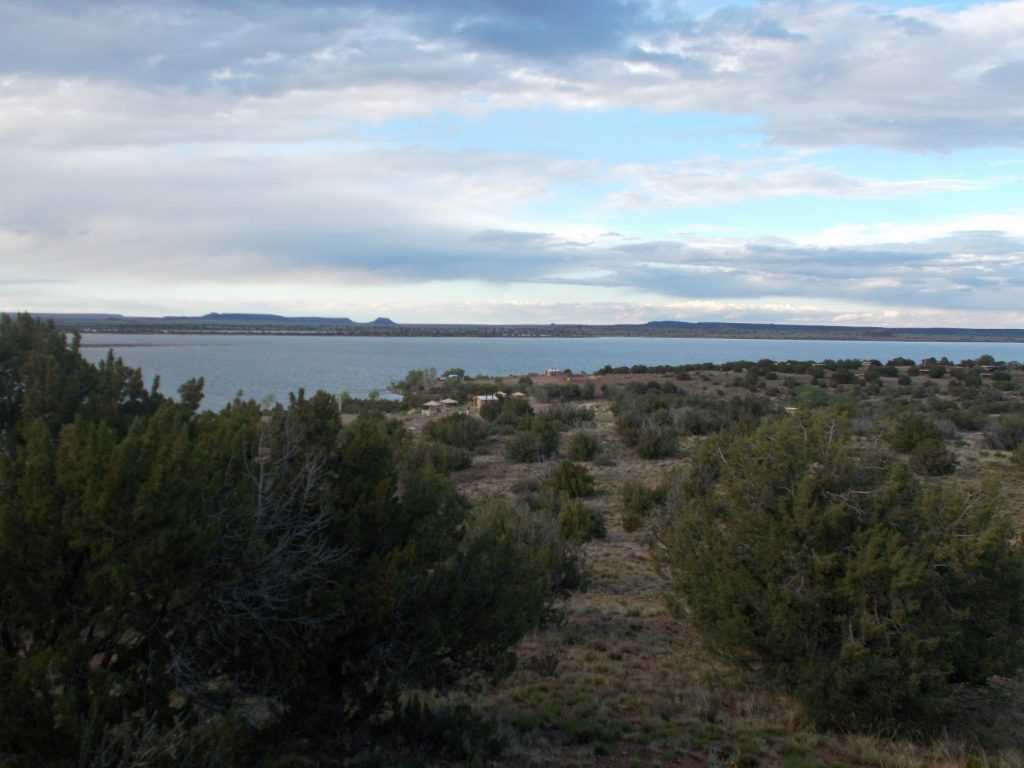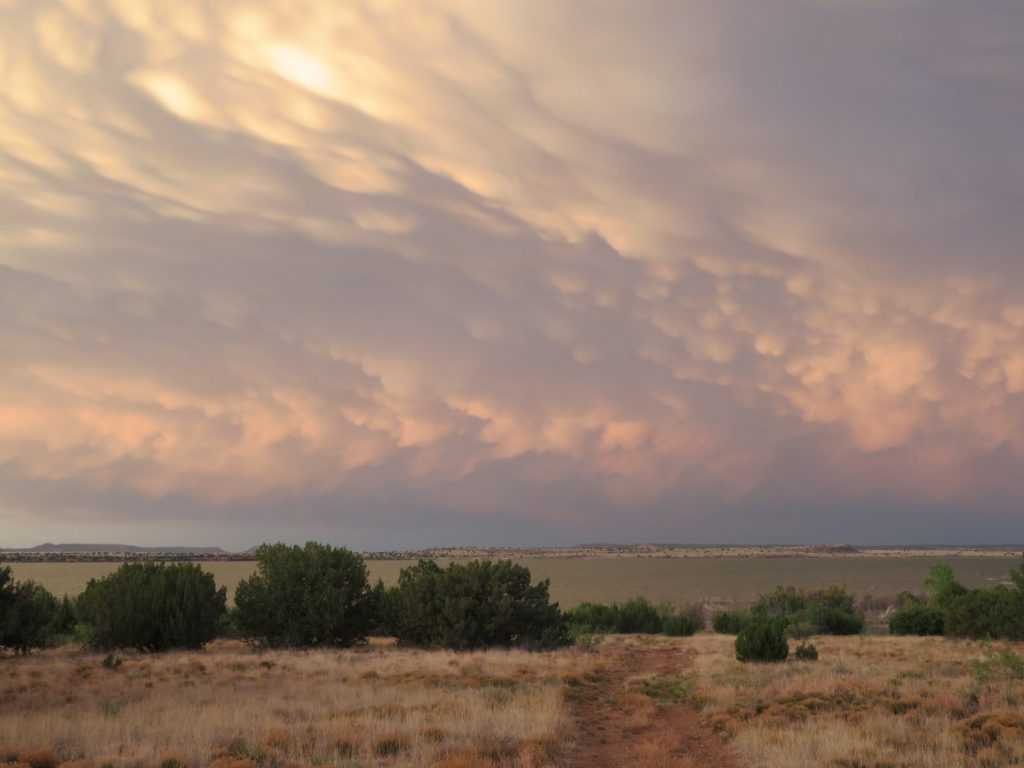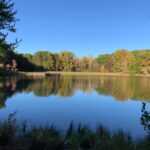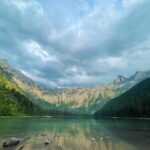Santa Rosa Lake State Park
Key Information
Contact Info
575-472-3110
Location
NM-91, Santa Rosa, NM 88435, United States
Opening Hours
Open 24 hours
Fee
$5
Introduction of Santa Rosa Lake State Park
Just seven miles to the north of the city of Santa Rosa sits the New Mexico plains’ Santa Rosa Lake State Park. The park is located at a height of around 4,800 feet. It is an excellent place to stay in for a night or a weekend while on a road trip because it is only a short distance from the famous Route 66. Numerous activities, including hiking, birding, and fishing, may be done within the state park. 3,500 acres of Santa Rosa Lake provide countless opportunities for boating, swimming, and other water sports. The Rocky Point camping area has access to scenic pathways that lead to and around the lake.
The dam and Santa Rosa Lake were allowed to be built thanks to the flood control statute of 1954. In 1981, the project was finished. Santa Rosa Lake serves as the first significant dam along the Pecos River and offers storage for irrigation, flood control, and sediment retention. The New Mexico State Parks Agency is in charge of overseeing and maintaining the region. During your visit, stop by the visitor centre to learn more about the history of the region and the building of the reservoir and dam.
The state park has two campgrounds: Rocky Point and Juniper Park. For RVers, Rocky Point Campground is more well-liked. Although some campsites in Rocky Point and the Juniper Park Campground are dry, many of them have water and electricity hookups. While some venues accept reservations, others operate on a first-come, first-served basis. The months of late spring and summer are the busiest travel times. Be mindful of seasonal closures that may affect some campsites or camping loops if you visit in the winter.

Campsites in Santa Rosa Lake State Park
Rocky Point Campground
First-come first-served
Primitive and Equestrian Camping
Don’t panic if you missed your chance to reserve a spot and it’s already full. In addition to the two primary campgrounds, the park provides a variety of undeveloped camping locations. There are 17 places along the beach where you may pitch a tent and spend the night beneath the stars. With lots of room and two 10-foot corrals to house your four-legged pals overnight, the Los Tanos Campground is an equestrian’s paradise. There are 15 different tent sites with picnic tables, campfire rings, and plenty of space for lounging by the fire.
A potable water spigot and a vault toilet are available nearby. If you want a place, come early because all of these locations are first-come, first-served. Other canine companions are also welcome, but you must keep an eye on them and make sure they are leashed at all times while you are there. The Los Tanos Equestrian Trail begins at the campground; consider taking a stroll there. Views of the Sandia Mountains, an abandoned windmill, and a portion of an ancient cabin are just a few of the popular sites.
Juniper Park Campground
There are 26 unhooked, shaded RV sites at Juniper Park Campground. The campsite welcomes pets and is first-come, first-served. There are various potable water spigots located throughout the campground in case you need drinking water while you’re there. Each of these roomy campsites features a large space for playing and lounging, a campfire grill or BBQ pit, and a covered picnic table. There are showers and running water in the bathroom, which is in the centre of the campsite. Near the water’s edge, there are a few of restrooms.
The campsite is a short stroll from several park services. Go to the picnic pavilion or the beachfront picnic tables if you’d like to dine outside. The boat ramp is a short stroll from the Juniper Campground, which is situated closer to the lake than Rocky Point Campground. The views from this campsite are breathtaking. To get to the Overlook Trail, go down the camp road. From there, you may enjoy some stunning views of the lake, the dam, and the neighbourhood.
Rocky Point Campground

Santa Rosa Lake State Park Activities
Fishing
Pack your fishing equipment before you leave since the state park will provide you with fantastic fishing opportunities. Walleye, catfish, and largemouth bass are often caught by anglers at Santa Rosa Lake. Your chances of landing a fish are excellent since the New Mexico Game and Fish Department keeps the lake well-stocked. It’s important to keep in mind that you must have a New Mexico fishing licence before you may fish in New Mexico Lakes. A boat ramp is accessible on-site if you intend to fish from a boat.
Boating
On Santa Rosa Lake, both motorised and non-powered boating are permitted. There is a four-lane boat ramp accessible to park visitors. Plan to do water skiing, jet skiing, or simply laze about the lake while you’re there to soak in the sights. Bring your kayak, canoe, or paddleboard because the vast lake is great for paddling as well. Whether you’re in a boat, on a paddleboard, or on another type of watercraft, being out on the water is a terrific way to cool off on a hot day.
Picnicking
There are grills and tables that are completely accessible.
Horseback Riding
A well-liked equestrian track is the Los Tanos Trail in Santa Rosa State Park. The park’s equestrian camping area, which has two corrals and water provided for your horse, is where the trailhead is situated. Ride the path all day to enjoy the breathtaking vistas, then cool yourself in the lake later. This trek, which is slightly over eight miles long, usually takes three hours to complete with a few breaks to take in the beauty. It might become really dry out there, so bring extra water for you and your horse.
Hiking
There are two quick, simple routes that are both paved and open to everybody. The Scenic Trail is a half-mile circle that provides lovely views of the lake and charming rock outcroppings. A three-quarters-mile loop across comparable terrain makes up the accessible path. Additionally, there are pathways that go from Steep Point Campground to the lake by descending a rocky incline. Mule deer, racoons, skunks, squirrels, foxes, and coyotes may be seen in this region as they approach water sources.

Wildlife Watching
Coyotes, deer, and fox are among the many wild animals that may be seen in the state park. Visit one of the wildlife viewing blinds located around the park if you wish to search for animals. You could even see a snake if you are hiking the trails or ascending the steep slopes. If you disrupt any rocks, especially, keep a look out for rattlesnakes. There are also many of non-venomous snakes in the park. Another well-liked pastime at the state park is birdwatching. Hawks, bald eagles, and woodpeckers are frequently seen, along with a wide variety of duck species.
Visitor Center
Make sure to visit the Army Corps of Engineers Visitor Center while you are there. The natural history of the region, the building of the reservoir, and the construction of the dam are only a few of the topics covered. Find out why Santa Rosa is known as the city of natural lakes. Learn about the Blue Hole, a natural lake renowned for its pristine water and for being a popular place for swimming and scuba diving.
Transportation
Driving
In the eastern part of New Mexico, Santa Rosa Lake State Park lies about seven miles north of the city of Santa Rosa. Take Highway 91 straight into the park from I-40. Due to the park’s proximity to Santa Rosa, supplies are easily accessible should you forget something or simply wish to go exploring. Santa Fe and Albuquerque will be accessible in less than two hours as well.
Even though Highway 91 has several turns and curves, getting to the state park should be a very straightforward journey. If you see that traffic is backing up behind you, you can stop driving at any of the turnouts that are located along the route. Since the state park’s entrance gate is open around-the-clock, you shouldn’t have any problem finding a campground even if you are running late.
You’ll discover that the camping spaces provide both pull-through and back-in spots. The sites are typically level, although at some of the gravel sites, levelling your rig may still be necessary. Although the park’s roads are suitable for cars, you might want to stroll or use the trails because of the landscape and animals.
Parking
Parking is available.
Public Transport
Public Transport is available.




